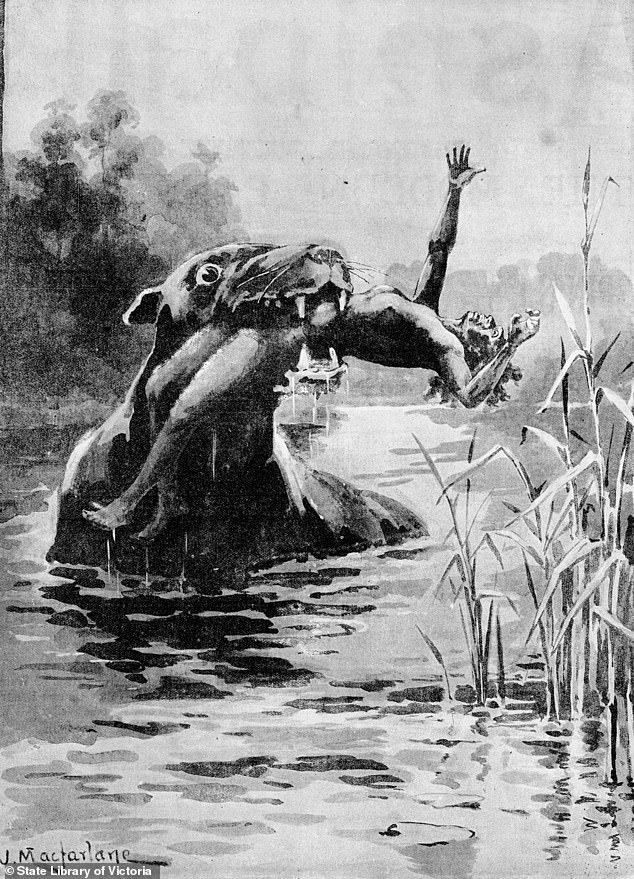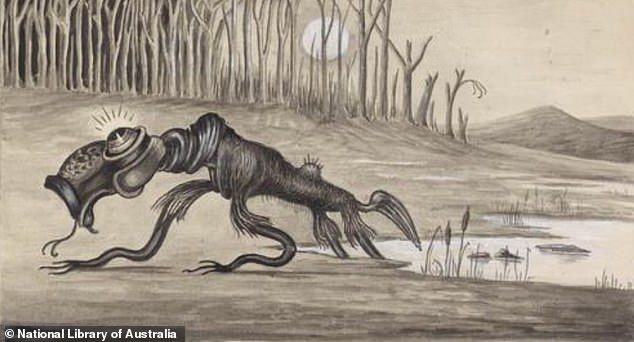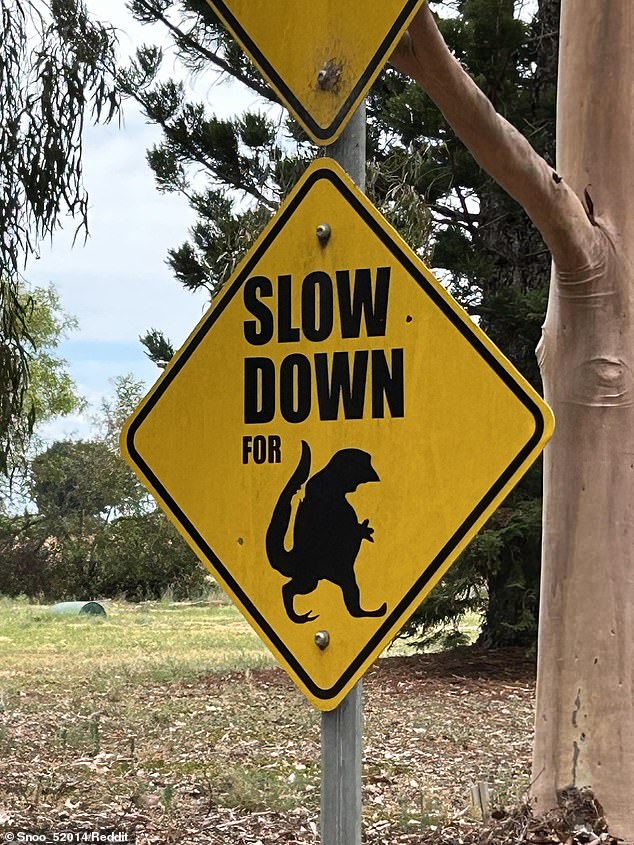A strange road sign left by a prankster has left drivers baffled.
An image posted on social media showed a sign reading “slow down for him” with a silhouette of a strange mythical creature underneath: the Australian Bunyip.
The Melbournite who posted the image joked that it “actually sped up… (we) didn’t want to stick around long enough to find out.”
The man-eating monster comes from indigenous Australian folklore from southeastern Australia, which was later immortalized in a book titled ‘Bunyip of Berkeley Creek’.
Social media users could not blame the photographer for not recognizing the animal on the road.
‘I’ve heard of the Bunyip but have never seen anything about what it looks like, so I have no frame of reference for this to be a Bunyip. “All I know is that it exists and that’s all I’ve been told,” said one reader.
‘To be fair, there is no solid description of a Bunyip. They say it looks like an ox, a hippopotamus, a duck, a giant snake, a dugong the size of a cow with the head of a bulldog, or a feathered seal… the only consistent details are that it lives in southern waterways. from eastern Australia and they will catch you if you’re not careful,” another responded.
A strange road has appeared in a Melbourne suburb and caused many to remember their (least) favorite childhood book.

The mythical Bunyip holds a fearsome place in the hearts of many Australian children, as parents passed down stories about a man-eating swamp monster.
The Bunyip is supposed to reside in reed-covered swamps and descriptions of the creature have evolved with the myth.
‘They have a high mutation rate, so they can vary in size, shape and color. “What is common to all Bunyips is their hunger for tourists… Australians spoil the taste of meat with a diet of beer and meat pies,” said another.
Many Australians were interested in propagating the myth, similar to that of the “drop-bear”, which is often the root of pranks played on unwitting tourists.
One said the road sign should have warned travelers to “make a U-turn.”
“You haven’t really experienced Australia until you’re a little worried about being eaten by an amphibious swamp monster,” joked another.

There are varied descriptions of the folklore monster accompanied by gruesome details of its calls and behaviors.
Many believe that the origins of the Bunyip lie in the supposed appearance of seals upstream in lakes and rivers in Victoria, Tasmania or South Australia.
Versions of the myth suggest that the Bunyip makes roars and rumbling noises as it eats people brave enough to approach inhabited waters.
Some claim that the cries of marsh birds were behind the monster’s reputation for having a terrifying howl.
Many said Jenny Wagner’s 1973 book scared them as children.
“That book terrified me as a child,” one wrote.
‘When I was a child it was so gloomy and depressing. But now I appreciate it,” another agreed.
‘I love the Australian’s sense of humour. I’m a Kiwi and my mother read that to me when I was a child along with Maori myths and legends. After that, I never wanted to go alone to visit streams,” wrote a woman from the other side of the ditch.


